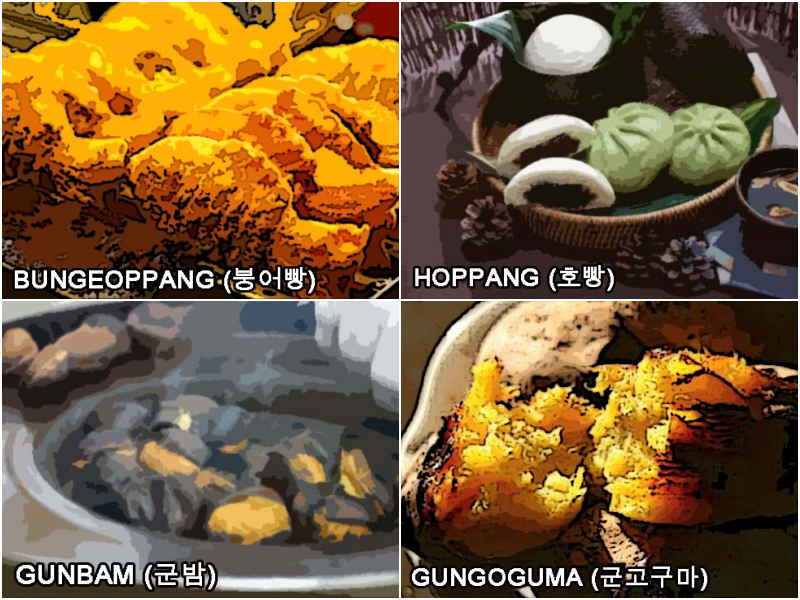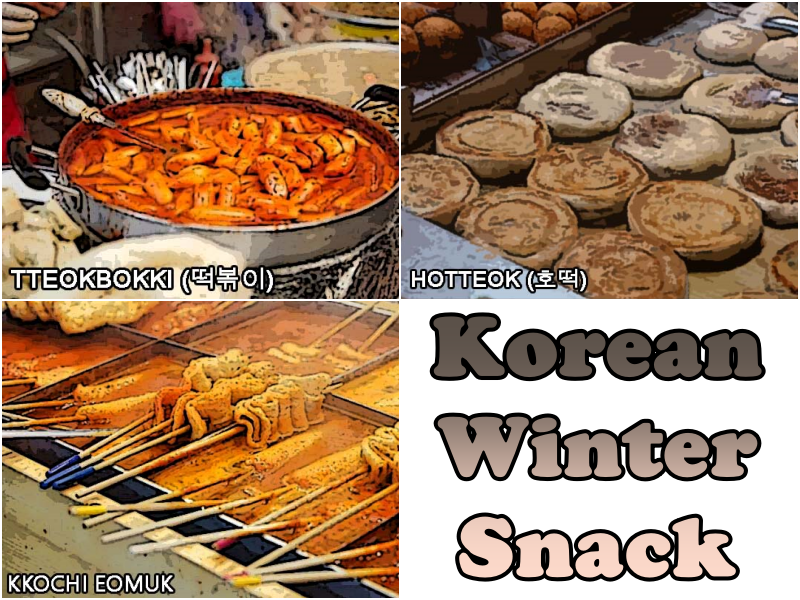- 한국어
- English
- 日本語
- 中文
- العربية
- Español
- Français
- Deutsch
- Pусский
- Tiếng Việt
- Indonesian
By Honorary Reporter Dayviana Diaz from Cuba
Photo = Dayviana Diaz
One of the best ways to warm up on the cold streets of Korea during winter is eating seasonal delicacies at street kiosks. Here are seven popular treats to please the palate and captivate the five senses.

Bungeoppang
This treat is peculiar due to its shape of a carp but no fish is used to make it. This crunchy cake is usually filled with sweet red bean paste but other fillings that have recently grown popular include custard cream and ice cream. Bungeoppang can vary slightly in shape, size and color depending on the amount of flour and cooking time. For Koreans, seeing this snack on the streets is a sign that winter has arrived, making it the quintessential winter snack in the country.
Hoppang
This round steamed bun made of rice flour has a variety of fillings; though red bean paste is the most common, other filling options include vegetables, pizza ingredients, meat, cheese, sweet potato and sweet pumpkin. Hoppang is usually served hot after being heated in the microwave, and can be found at street kiosks or convenience stores. The name comes from the "Ho, ho" sound Koreans make when blowing on the bun to cool and that made by a happy family when eating it together.
Gunbam
Roasted chestnuts can also be prepared at home. Though they take a long time to thoroughly roast, the longer they take, the better the flavor. Gunbam is sold at traditional markets in paper bags.
Gungoguma
Roasted sweet potato is a fairly common snack in winter usually found at a pojangmacha (street kiosk) or convenience store; it can also be made at home. The Korean sweet potato is sweeter and more velvety and rich in fiber, making it a healthy food to eat in the cold winter months.

Tteokbokki
These spicy rice cakes, one of the most popular snacks in Korea, are made from garaetteok (cylinder-shaped rice cake made from non-glutinous flour) and eomuk (fish cake) mixed with ingredients like onions, carrots and gochugaru (red chili paste). Versions include those featuring curry, cheese and soy sauce.
Hotteok
Making this sweet pancake involves dough made of glutinous rice and filled with melted brown sugar or syrup. Each region in Korea has its own recipe for this round and flat pancake that is lightly fried in oil. Variations include those featuring cinnamon, nuts, vegetables, seeds and even kimchi as filling.
Kkochi-eomuk
These fish cake skewers are boiled in a broth with radish and kelp. The eomuk is not spicy, making it the perfect complement to tteokbokki. This snack quickly raises one's body temperature, so both the fish cake and the accompanying soup are great for an especially cold day.
enny0611@korea.kr
*This article is written by a Korea.net Honorary Reporter. Our group of Honorary Reporters are from all around the world, and they share with Korea.net their love and passion for all things Korean.